Australia is renowned not just for its stunning landscapes and warm hospitality, but also for its incredibly diverse wildlife. While kangaroos, koalas, and wombats often steal the spotlight for being cute and cuddly, there’s another side to Australia’s natural world that’s equally intriguing — and a little more formidable.
Also read: Which Aussie road trip fits your travel personality?
That said, don’t let the headlines scare you off. These creatures are just one part of the rich tapestry of biodiversity that makes Australia such a compelling destination. Many travellers even seek out wildlife tours to observe these animals safely, whether in accredited sanctuaries, aquariums, or with experienced guides in the wild. So if you’re curious about Australian animals — both adorable and adrenaline-inducing — this guide will introduce you to some of the most fascinating species the country has to offer.
Snakes
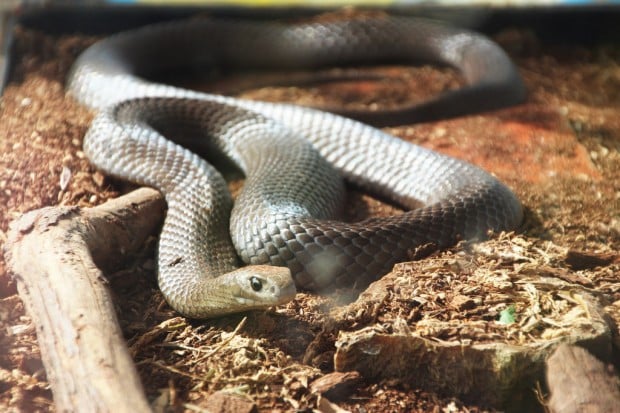
Image credit: Takver
Australia is the habitat of several extremely venomous snakes, from the inland taipan, which is the most venomous snake on the planet, to the eastern brown snake, tiger snake and death adder. The inland taipan is unbelievably elusive, though, and it’s almost impossible to spot one, let alone get bitten by one.
It’s the eastern brown snake you need to watch out for. This is the second most venomous snake in the world and, in contrast to the inland taipan, lives in populated areas and is very aggressive. It feeds on mice, which unfortunately are found near homes. If you happen to encounter a snake, it will want to avoid a confrontation as much as you, unless there’s no other option. Leave it be and it will leave you alone too.
Spiders

Image credit: Alan Couch
There are two spiders in Australia you should be wary of. First, the Sydney funnel web spider is one of the most dangerous spiders on earth because of its aggressiveness. It does, however, use its venom as a defence, rather than for attacking. Most bites happen to people working in the garden or fooling around in a park. On the bright side, there is an anti-venom available and since 1981, not a single person has died from a Sydney funnel web spider bite.
The other main spider to watch out for is the redback spider that lives in dry areas like garages, mailboxes, garden sheds and so on. Again, there is an anti-venom available. The main piece of advice concerned with avoiding spiders is that if you watch out where you put your hands, you’ll be just fine.
Sharks
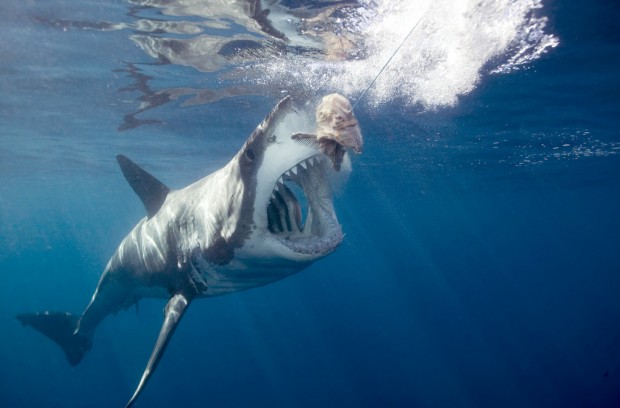
Image credit: Lwp Kommunikacio
The fearsome reputation of sharks is actually undeserved. Although they are responsible for one to a few fatalities each year, that’s a number that crumbles when compared to other animals. That being said, it’s good to be conscious of the fact that any coastal water in Australia is home to sharks. There are three species that are responsible for nearly all attacks – the infamous great white shark, the tiger shark and the bull shark, the last one being the most dangerous by far. You’re advised not to swim in murky and unclear waters where you can be mistaken for the sharks’ natural prey.
While sharks strike fear in many people, other more adventure-minded (or thrill-seeking) visitors can go shark cage diving and get as close as possible to these masters of the ocean. A great place to do that is Port Lincoln in South Australia, where the waters are inhabited by one of the largest concentrations of great white sharks in the world.
Crocodiles
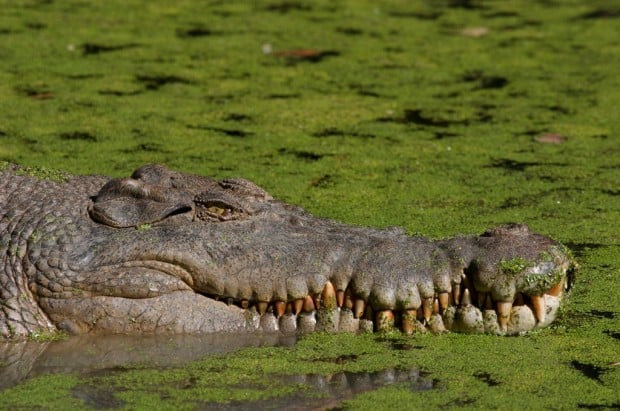
Image credit: Jurgen Otto
There are two crocodile species in Australia, the freshwater crocodile and the saltwater or sea crocodile. It’s the latter kind of crocodile that’s lethal. The saltwater crocodile lives in the rivers, on the coast and in the estuaries of northern Australia and is one of the only animals on earth that will actively hunt humans. They’re strong, huge, fast and clever.
It’s best to stay out of any water in northern Australia unless you’re 100% sure they are crocodile-free. Just like sharks, crocodiles are also a tourist attraction in Australia – many companies offer crocodile-watching tours.
Box Jellyfish
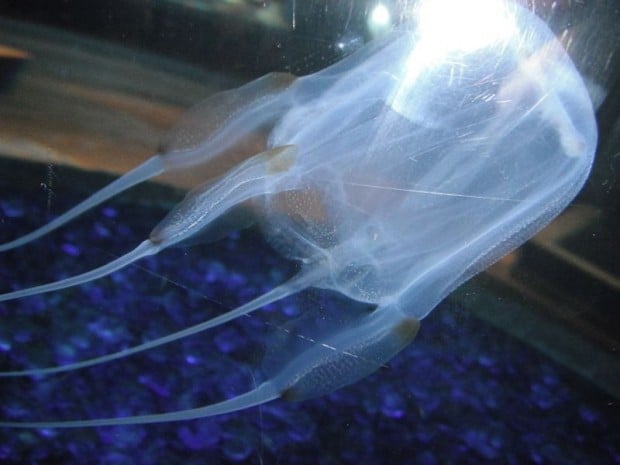
Image credit: Linda Robinson
Box jellyfish are a category of jellyfish shaped like – that’s right – a box. Most of those species are venomous, but it’s the so-called sea wasp that’s most dangerous. This animal possesses the second most lethal venom in the world. A box jellyfish has the potential to kill you within mere minutes. They live in the waters off the northeast coast of Australia, where they arrive seasonally, in the ‘stinger season’ that runs from October through May. Going swimming in water without nets or without a sting suit is extremely dumb during that time of year. Again, be aware!
Octopus
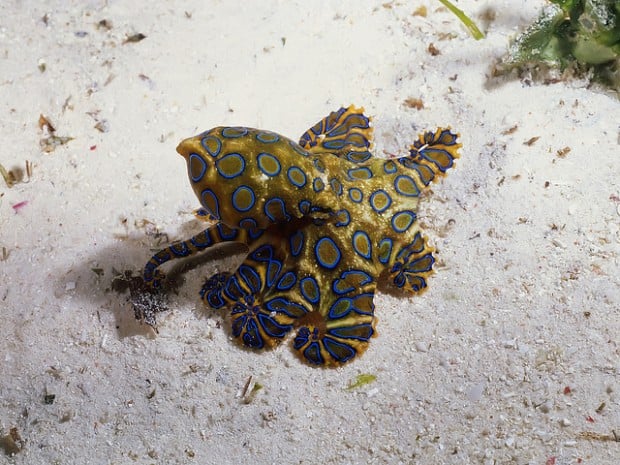
Image credit: Angell Williams
The blue-ringed octopus is arguably one of the most infamous octopus species. This eight-armed creature produces a venom, a neurotoxin, that’s – wait for it – 1,200 times more potent than cyanide. The blue-ringed octopus lives in reefs and rocky areas in the seas of southern Australia. When going snorkelling and diving, don’t try to catch, chase or touch any octopus, just in case.
Stonefish

Image credit: ~Sage~
The stonefish is a member of the family of scorpionfish, making the stonefish an ugly cousin of the colourfully striped lionfish. The stonefish can be so well camouflaged that it is virtually invisible on the sea floor. The danger lurks in stepping on one of its venomous dorsal fins when it rests on the bottom of the sea. So, when snorkelling or diving, make sure to never stand on the sand or rocks. There may be a stonefish right below your feet without you even noticing it!
Cone shells
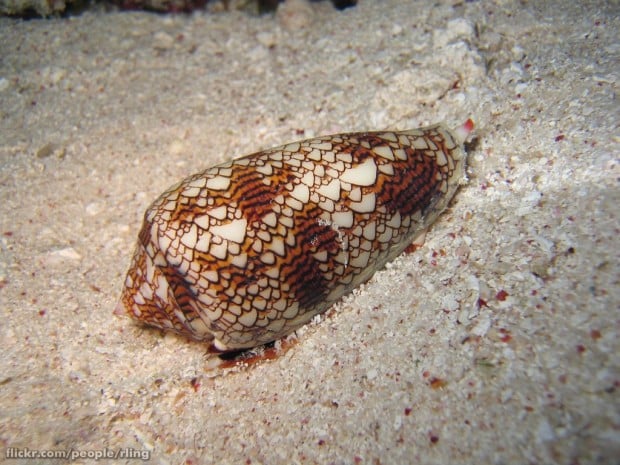
Image credit: Richard Ling
Cone shells are killer snails, as weird as that may sound. Their shells are generally colourful, but you should not pick them up. Cone shells have tiny neurotoxic harpoons that they can fire off. These neurotoxic harpoons can penetrate human skin and some of them are even powerful enough to go right through a wetsuit. While you should watch out for the cone shells when out and about in the ocean, the cone shells are harmless if you don’t touch them.
Honey bees
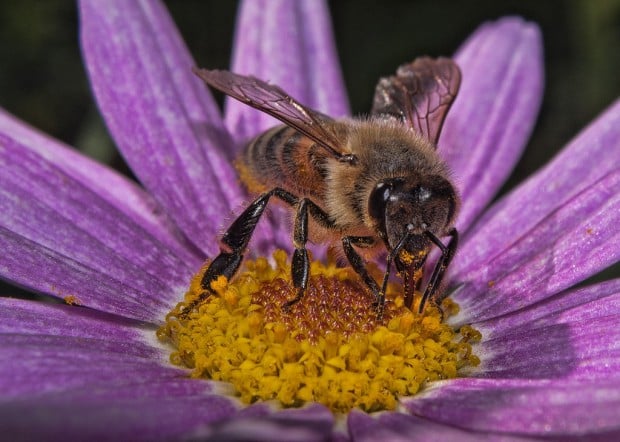
Image credit: Indigo Skies Photography
Now, here comes the most dangerous animal in Australia… or rather, the most dangerous insect in Australia. Honey bees are responsible for more deaths in Australia than all of the above-mentioned animals combined. This is to put into perspective the negative reputation that Australia has when it comes to deadly wildlife. Animals closer to home are more likely to kill you than snakes, spiders or sharks.
When travelling around the country, you should enjoy its immense natural beauty while being aware of the presence of potentially dangerous creatures. It’s always better to be safe and prepared than sorry and injured.
Also read: Australia’s Unmissable Culinary Adventures: A Feast for the Senses
Now, get out and explore Australia!





